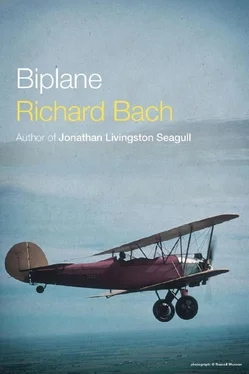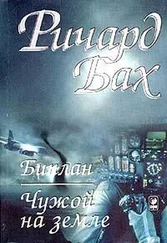Ричард Бах - Biplane
Здесь есть возможность читать онлайн «Ричард Бах - Biplane» весь текст электронной книги совершенно бесплатно (целиком полную версию без сокращений). В некоторых случаях можно слушать аудио, скачать через торрент в формате fb2 и присутствует краткое содержание. Город: New York, Год выпуска: 2012, ISBN: 2012, Издательство: Scribner, Жанр: Современная проза, на английском языке. Описание произведения, (предисловие) а так же отзывы посетителей доступны на портале библиотеки ЛибКат.
- Название:Biplane
- Автор:
- Издательство:Scribner
- Жанр:
- Год:2012
- Город:New York
- ISBN:978-1-4516-9744-5
- Рейтинг книги:3 / 5. Голосов: 1
-
Избранное:Добавить в избранное
- Отзывы:
-
Ваша оценка:
- 60
- 1
- 2
- 3
- 4
- 5
Biplane: краткое содержание, описание и аннотация
Предлагаем к чтению аннотацию, описание, краткое содержание или предисловие (зависит от того, что написал сам автор книги «Biplane»). Если вы не нашли необходимую информацию о книге — напишите в комментариях, мы постараемся отыскать её.
Biplane — читать онлайн бесплатно полную книгу (весь текст) целиком
Ниже представлен текст книги, разбитый по страницам. Система сохранения места последней прочитанной страницы, позволяет с удобством читать онлайн бесплатно книгу «Biplane», без необходимости каждый раз заново искать на чём Вы остановились. Поставьте закладку, и сможете в любой момент перейти на страницу, на которой закончили чтение.
Интервал:
Закладка:
As it is, even airline pilots are often uneasy when they must fly as passengers. Each pilot would feel a little more comfortable if he were at the controls and not sitting to look at a faceless door that doesn’t admit that there is anyone at all on the flight deck. Gone for pilots is the fun of flying as passenger, unknowing and fearful, unknowing and enjoying flight. There is always the creature within that is criticizing the way an airplane is being flown. Even sitting at the rear of a 110-passenger jetliner there is one lonely soul, during landing, that is saying wordlessly to the pilot, “Not now, you fool! We’re rounding out too soon! East it forward, ease it on in. that’s the way. too much, too much! Pull it back now! Flare out or you’ll. ” and with a thump the wheels are rolling on the concrete. “Well, all right,” from the back of the passenger cabin, “but I could have had her down much more smoothly.”
* * *
The biplane hums loudly along with the sun now low ahead, a round circle of distorted oily brightness in the forward windscreen. Not much daylight left to fly. The baseball sun, thrown high, having paused at its noon top, comes whistling down through the horizon. Though the sky goes on being happily light, the ground is not taken in. The ground is a solemn keeper of very precise time, and when the sun is down it dutifully smothers its dwellers in darkness.
Vicksburg below, and there, with shadows half across its opaque brown waves, the Mississippi. A river barge, a bridge that is probably a toll bridge, and on it automobiles, and among the automobiles a sparkling of headlights coming on. Time to land, and a few miles south is the airport for Vicksburg. But the map says that there are two airports close ahead westward; if I can land at one of these I can be that much farther along my course when the sun begins its launch tomorrow.
Press on, the voice says. If you don’t find the airports you can land in a field, and find fuel farther on in the morning. The voice that speaks is the one within that always seeks adventure, and, living only for adventure, doesn’t care what happens to aircraft or pilot. Tonight, once again, it wins its case. We leave the Mississippi and Vicksburg behind, and press on. Louisiana rolls onto the map.
The land is all cut into dark squares, in which are probably growing green peppers and peas that have black eyes. And on one square grows a cluster of Wooden buildings. A town. There should be an airport here, but I can see no sign of one. It is there, of course, somewhere, but little airports can be impossible to find even in broad daylight. “Airport” is often just a word applied to a pasture, to the side of which a farmer keeps a camouflaged fuel pump. It is a recognized game and point of competition in some parts of the country: Find the Airport. Pick one of the thin blue circles on an aeronautical map, one that no player has ever seen before. Take off at five-minute intervals to find it. The winners, those that find the airport, share a week of superiority over those who may be directly overhead, yet unseeing. “That can never happen to me,” I remember saying, when first a friend suggested we play Find the Airport. “What a silly game.” But in gracious tolerance I condescended to race him to the airport.
I spent the better part of that afternoon circling above the many-pastured countryside, searching and searching, combing every single pasture, and there were many, before my wife finally saw an airplane parked on the grass and we shakily completed the game. A very official airport, too. Under the trees were not one, but two gas pumps waiting, and a row of small hangars, a restaurant, a swimming pool.
So this evening, west of the Mississippi, I do not even bother to circle. I will seek the one next airport, and, failing to find that, will land in a field and wait for the daylight.
The trees are cut far back from the road here, wide farmlands broad to each side, and farmhouses with lights coming on inside. A lonely feeling, watching those lights come on.
Ahead, a town, Rayville, Louisiana. Just to the west should be the airport. And obviously, clearly, there it is. A single narrow strip of asphalt, a short row of open hangars, a lone and tattered windsock. Crosswind. Hard surface and crosswind. But a gentle one; it couldn’t be more than five miles per hour. Surely THAT isn’t enough to pose a problem. The crosswind lesson has been a bitter one, one not easily forgotten, but it is going dark on the ground and I must make my decision quickly. If I do not land here, I must pick my field, and a good field will be difficult to choose in the shadows and I will still need the fuel in the morning. It would be good to land at Rayville. So near, only a thousand feet away from me. Yet, with the crosswind, a thousand feet is a long way away. A low pass certainly won’t hurt, one of the many voices within has suggested. And truly. Nothing to be lost by a low pass down the runway, except possibly a few minutes.
So into the pattern we go and slide down the invisible ramp of air that leads to the end of every runway ever built. Across the fence, ten feet high. Five feet. It is not good. The biplane has to crab into the wind in order to fly straight down the runway; to land like this would be a very risky thing at best. And look there, pilot. Not thirty feet from the edge of the runway, a long earth embankment paralleling. How high? Two feet? Three feet? High enough; a one-foot embankment would be high enough to shear the landing gear from the biplane were she to run off the narrow runway. And with the crosswind from that direction, that is the way she would turn. If she lost her gear, that would be the end of the story. Propeller and engine would twist and bury themselves into the earth, the lower wing panels rip away and probably take the upper wing with them. There wouldn’t be much left. So. Decision?
I must land without hitting the embankment. I’m a good pilot, after all. Haven’t I flown almost two thousand hours in many airplanes? I have, and I’ve flown from zero miles per hour to a shade over twice the speed of sound. Surely, surely I can land an old biplane on a runway with a five-mile crosswind.
Decision made, we’re once again down the ramp, this time with intent to stop on the ground. Careful, ease it down, let the main wheels touch. Good; forward on the stick to hold those main wheels down and the rudder high in the air. Watch it watch it, she’s going to want to swing to the left, into the embankment. Nice touchdown, just a little while longer and we’ll be laughing at our fears. Here she comes, tailwheel coming down, now pull hard back on the stick to pin the tail down and hope the tailwheel steering works. left rudder, right rudder, full right rudder look OUT BOY SHE ’S SWINGING IT ’S TOO LATE I CAN ’T CONTROL HER WE ’RE GOING TO HIT THAT DIRT!
Well, if we’re going to hit it, we’re going to hit it hard. Full throttle stick forward and maybe we can fly off before the dirt, a chance in a hundred.
WHAT ARE YOU DOING WITH THAT THROTTLE WE ’RE GOING TO HIT THE DIRT THERE ’S NOTHING YOU CAN DO ABOUT IT LOOK OUT HANG ON HERE WE GO!!
In a second the biplane rolls off the runway, throttle wide open and engine roaring full power, angling sharply toward the dirt wall.
And here, in the space of another second, two people struggling within the pilot. One has given up, is certain that there is to be a big splintering crash in the next instant. The other, thinking still, playing one last card, one very last card, and now, playing, without time even to glance at the airspeed to see if the airplane will fly, slams hard back on the control stick.
The biplane points her nose up, but refuses to fly. The card player is philosophical. We played what we had and we lost. There will be a crashing sound in the next tenth of a second. Pilot, I hope you’ve learned about crosswinds.
Читать дальшеИнтервал:
Закладка:
Похожие книги на «Biplane»
Представляем Вашему вниманию похожие книги на «Biplane» списком для выбора. Мы отобрали схожую по названию и смыслу литературу в надежде предоставить читателям больше вариантов отыскать новые, интересные, ещё непрочитанные произведения.
Обсуждение, отзывы о книге «Biplane» и просто собственные мнения читателей. Оставьте ваши комментарии, напишите, что Вы думаете о произведении, его смысле или главных героях. Укажите что конкретно понравилось, а что нет, и почему Вы так считаете.





